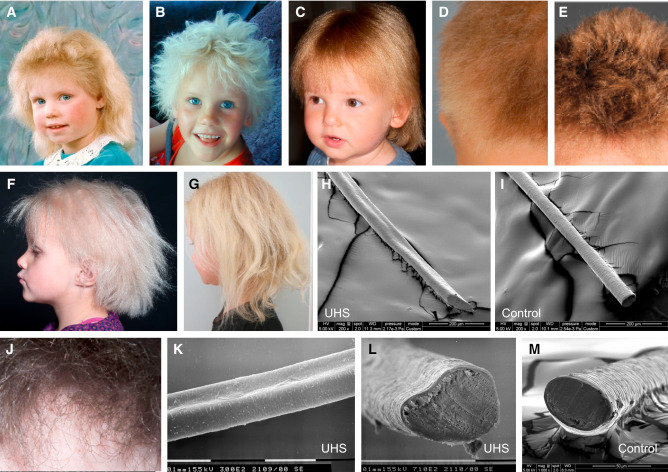
Are you unable to tame your child’s hair? What if he simply had uncombable hair syndrome? Under this improbable name (which resembles a skincare slogan) lies a real hair disease discovered a few years ago.
Do you know about unmanageable hair syndrome? No, it is not a formula invented by a hairdresser to describe your rebellious mop of hair, but a rare genetic disease, still little known, which affects certain children.
Shaggy hair growing in all directions
Uncombable hair syndrome is characterized by particularly twisted, shaggy hair that refuses to be flattened by a brush or comb and for good reason, it grows in all directions, without any cohesion! “The hair gradually becomes silvery blond or straw-colored, dry and untidy, stands up on the scalp, grows in all directions and cannot be flattened. describes Dr. Alexander Navarini, professor of immunodermatology at the University of Zurich in a press release.
The disease even has a very learned name: Triangular and canaliculi pili but it is difficult to say more. If it is not serious, it has remained a mystery for a long time.e. For example, the rare disease site Orphanet does not know the prevalence of this syndrome. And researchers have long remained “with their hair on end” in the face of this incomprehensible phenomenon.

A genetic mutation discovered only a few years ago
But a few years ago, in 2016, a team from the Epidermal Differentiation and Rheumatoid Autoimmunity Unit at Inserm understood the mechanism of this rare disease, 40 years after its description in 1973. According to their research, the disease would be due to recessive mutations of three genes involved in hair formation:
- The first encodes one of the structural components of hair, trichohyalin (TCHH gene).
- The other two are at the origin of enzymes which target it in turn: peptidyl-arginine deiminase 3 (PAD3 gene) and transglutaminase 3 (TGase3).
And inactivating the PAD3 gene in mice had the effect of modifying the shape of the whiskers.
“In conclusion, the absence of TCHH or the defect in the biochemical cascade which results in the stiffening of the hair shaft are responsible for the abnormalities in hair formation characteristic of uncombable hair syndrome. These results, in addition to describing the molecular origin of the disease and allow a better diagnosis, provide new knowledge on hair and the mechanisms of its formation”, details the Inserm press release.
The disease fades at puberty
However, rest assured if you suspect your child of having this “far-fetched” syndrome. According to research, the disease is not serious, it generally begins during childhood, between 3 months to 12 years, and fades at puberty without any particular intervention: only gentle care such as conditioners, brushes limp hair and avoiding any aggressive treatment on the hair is recommended.
